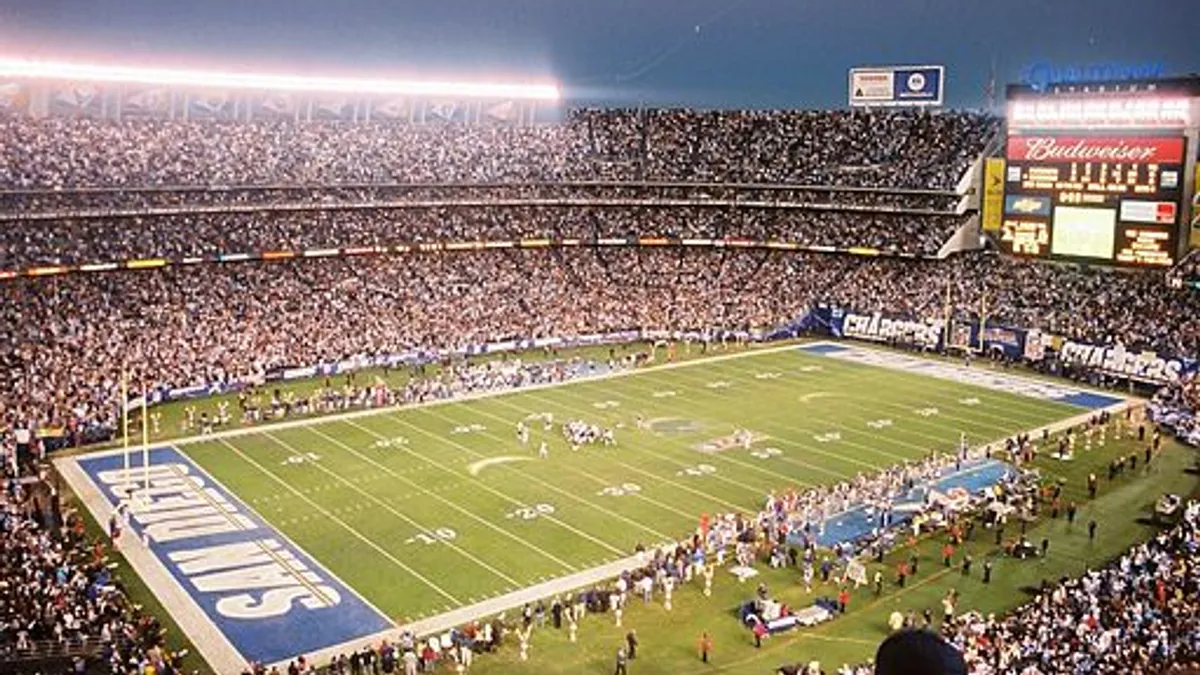Dive Brief:
- A group of investors has proposed a $1 billion Gensler-designed Major League Soccer development on the current Qualcomm Stadium site near San Diego, once home to the NFL's Chargers, according to the San Diego Union-Tribune.
- The FS Investors' proposal includes a 20,000-seat to 30,000-seat, $200 million soccer stadium, which, if approved, would host a new MLS franchise, other soccer clubs and the San Diego State University (SDSU) Aztecs football team.
- FS officials said they would purchase Qualcomm from the city, demolish it and replace it with the new soccer venue. FS also proposes to set aside 15 acres for a future NFL stadium, build a 55-acre park, pay for any necessary traffic and onsite infrastructure improvements and encourage private investment at SDSU — all part of a transit-oriented development tied to trolley service.
Dive Insight:
After voters rejected a plan for a new NFL football stadium and convention center in November, the Chargers announced earlier this month they would exercise an NFL option granted to them last year and move the team to Los Angeles, where they will share the Rams' near-$3 billion facility.
The MLS-centered plan is still in its infancy and requires the league to approve a new franchise and voters to approve an initiative that hasn't yet made its way onto a ballot. FS said waiting until the next scheduled vote in 2018 would likely destroy their chances at a franchise, so company officials said they would try to persuade the City Council to bypass the voting process and approve the deal on its own.
If the measure does end up going before voters, developers might see a better outcome than the Chargers did, as their proposal does not include a city-funding component. The Chargers failed stadium proposal included an increase in the city's hotel tax to help pay for the project.
There has been a surge of soccer-related development in the U.S. recently, some privately financed and some relying on state or local investment to make their projects happen. Those who go the private route can enjoy a level of autonomy that publicly funded projects do not. For example, the proposed D.C. United stadium in Washington, DC, has been through an arduous zoning process dealing with every aspect of the project from design to traffic control to whether it or not it would discourage visitors into the wider business district surrounding the venue. The city has pledged $150 million to the project.













